Exploring England #37
London is full of historic sites commemorating people and events from the past. Many are famous and teeming with visitors, while some are almost unknown. On our way to the Museum of London, we discovered a small green square containing two hidden treasures.
The dilapidated ruins of a medieval gate, built on top of the original Roman city wall, fill the front of the square. Even when dwarfed by the surrounding modern buildings, the 13th century bastion is imposing. The Roman wall, constructed in the 2nd century AD, was fortified with 21 bastions added in medieval times.
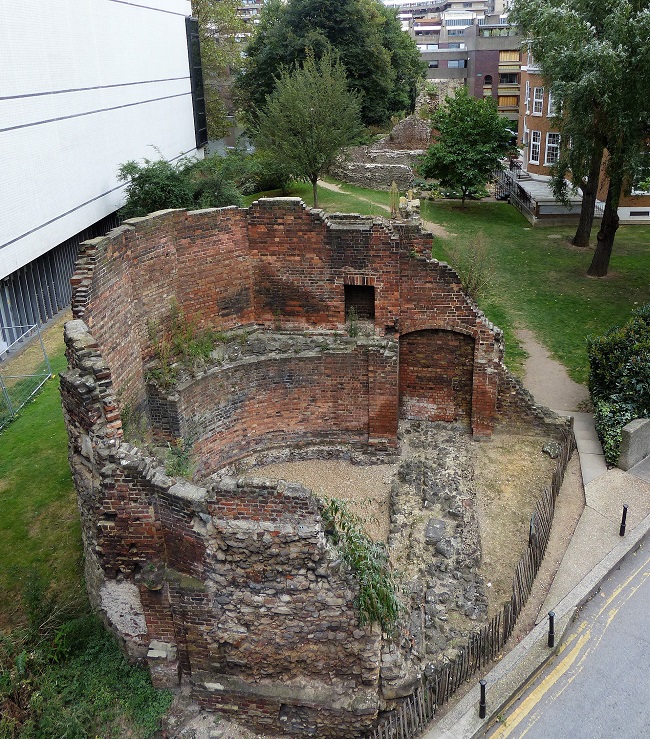
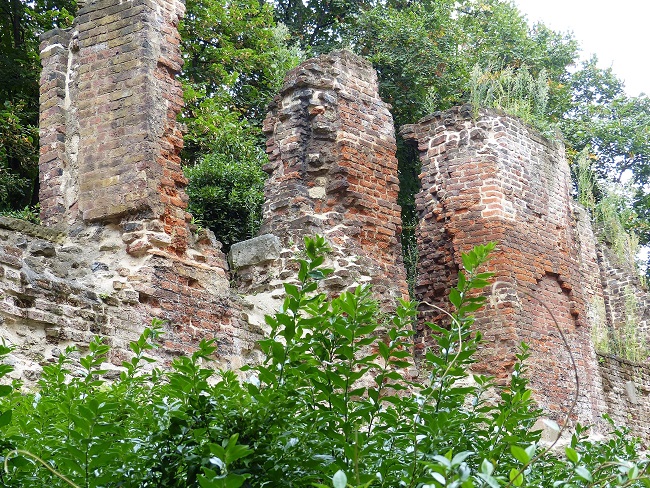
Behind the bastion are more remnants of the city wall and, tucked into a space between the wall and the Barber-Surgeons’ Hall, is the Barbers’ Physic Garden. Created in 1978, the plants are representative of those used for medicinal purposes from medieval times to the present; they were all listed in a botanical book published in 1597 by John Gerard, Master Barber-Surgeon.
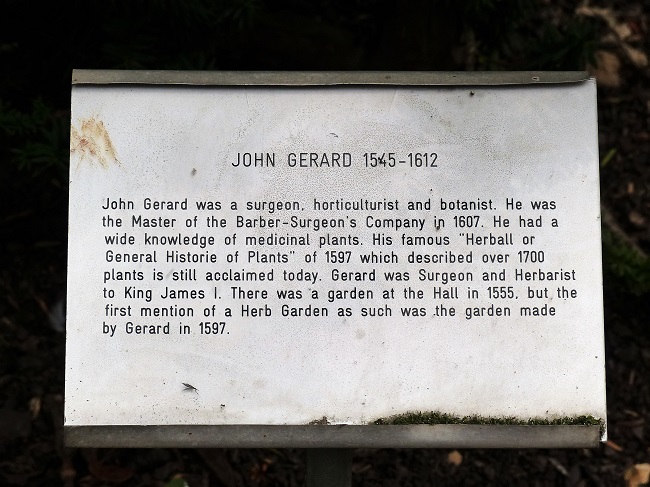

Each plant is accompanied by an explanation of its medicinal benefits. Some have been in use for centuries but, with modern research methods, others have been found to have unhealthy side effects.
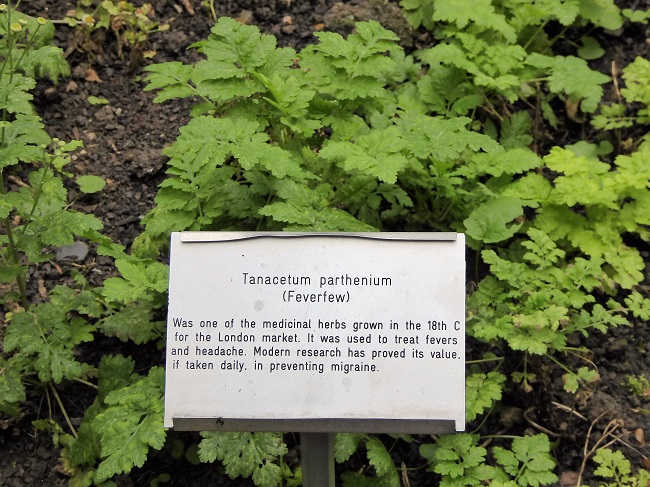
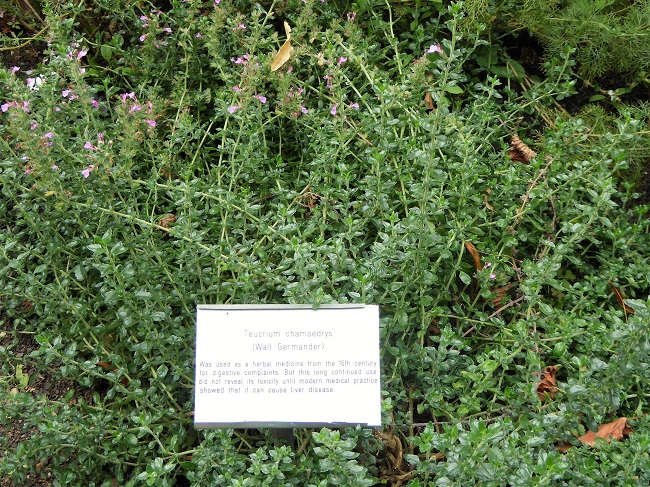

Many of the plants are familiar to us. They grow just as happily in Australian gardens as in this hidden garden in the centre of London.

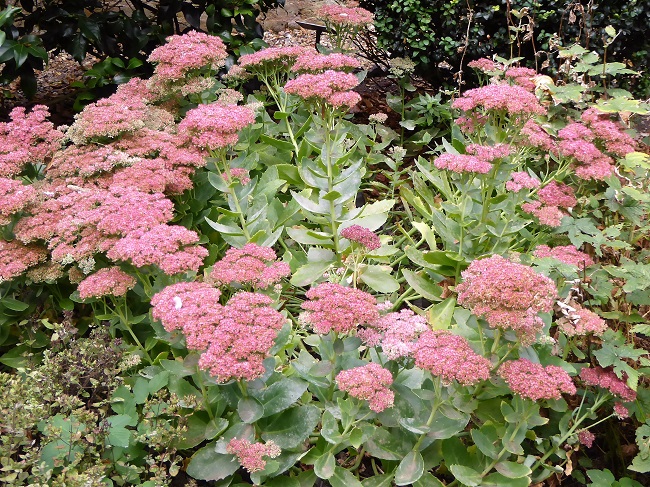

I love medicinal plant gardens…I find them very fascinating. There are quite a few of them here in Sri Lanka, as the plants are used for ayurvedic purposes.There are many plants that are specific to Sri Lanka apparently and most are new to us.
Peta
LikeLiked by 1 person
It was so interesting reading about the uses of all these plants, Peta.
LikeLike
Love the use of medicinal plants. Usually so much safer than prescription medicine. Thanks for another informative and interesting post.
LikeLiked by 1 person
Except for the middle one. It says in the information that while it was good for one complaint it was discovered to also cause liver disease. I thought the story about the Pied Piper having valerian in his pockets was fascinating.
LikeLike
Yes. The Pied Piper story did make me laugh. Was interested in first plant to stop or reduce migraines. Grandson has had migraines since kindergarten. Late 20’s now. If I’m ever in London this would be a place I would visit. Thanks.
LikeLiked by 1 person
It’s easy to find and only takes a little while to visit. Next time, we’re going to do the wall walk to see all the ruins. I thought the migraine information was interesting too.
LikeLike
Wow this is so interesting, I need to get back to London!
LikeLiked by 1 person
We love visiting London and still have so much to see there.
LikeLiked by 1 person
As an old herbalist this was most fascinating to me – I didn’t know such a place was in London. It’s amazing what you miss even when you live in the area for several years! Your photos of the ruins are excellent – I love the perspective of the first one in particular!
LikeLiked by 1 person
It was really interesting to read how each plant was used, and also that many are still in use now.
This section of the wall and the bastion are well-preserved and easy to see. We found out that there is a walk you can do along the wall to see the remains, which goes for nearly 3km. It’s on our list for next time.
LikeLiked by 1 person
What interesting tidbits the signs share! Much better than just dry scientific facts.
LikeLiked by 1 person
We spent a long time reading all the information.
LikeLike
This is amazing. I love the plants in the middle it is a good idea.
LikeLiked by 1 person
It was interesting to learn about these plants. Thank you!
LikeLike
I love to discover places like this.
LikeLiked by 1 person
We found it by accident on our way to the museum. There wasn’t even a sign until we got down in front of it. This section of Roman wall is quite long and we followed it around as far as possible, and it turns out there is a walk you can do from Tower Bridge following all the sections of wall. That’s on our to do list for the next time we are in London. 🙂
LikeLiked by 1 person
There is a lovely little hidden garden near to the Tower of London which I went to on my last visit. London has so many green spaces.
LikeLiked by 1 person
We’re going to do the London Wall walk next time we’re there, and hopefully we’ll unearth some more hidden spaces.
LikeLiked by 1 person
I didn’t know there even was a London wall!
LikeLiked by 1 person
It’s the remains of the Roman/Medieval wall and there is a self guided walk you can do to see all the places where it is visible. This bastion and wall is just one small part. It’s right next door to the Museum of London. I remember coming across another part when we were there the first time in 1999 but I can’t remember where it was.
LikeLiked by 1 person
I will enjoy your discovery.
LikeLiked by 1 person
It will be a while before we are there again. 🙂
LikeLiked by 1 person
I’m very patient 😀
LikeLiked by 1 person
Thank You teaching me more about London. It was a great pleasure to read it and looking at Your gorgeous photos. I loved very much Roman wall photos.
LikeLiked by 1 person
There is more Roman wall in London than we were aware of. Next time we’re there we are going to do a walk to see it all. I’m glad you enjoyed this story. 🙂
LikeLike
I love ‘survivors’ like this 🙂 🙂
LikeLiked by 1 person
And even more so when we find them unexpectedly.
LikeLiked by 1 person
Beautiful. 🙂 We visited London several years back, and I was amazed at the beautiful little gardens tucked away on corners. They just invited us to walk through. Wish we could go back. 🙂
LikeLiked by 1 person
We’ve always visited London in summer and I am amazed every time by all the gardens, hanging baskets and other floral decorations there are everywhere.
LikeLiked by 1 person
There is some fantastic history here. I love the Pied Piper story. Wow!
LikeLiked by 1 person
I thought that was a great story too, Dianne. Fancy rats liking valerian.
LikeLiked by 1 person
Amazing. So much learn from these gardens.
LikeLiked by 1 person
Yes, it was interesting to read which of these plants are still in use.
LikeLiked by 1 person
Great photos, Carol, of this interestingly researched medicinal plant garden. 🙂
LikeLiked by 1 person
Thank you Cathy. I learned a thing or two in this garden.
LikeLiked by 1 person